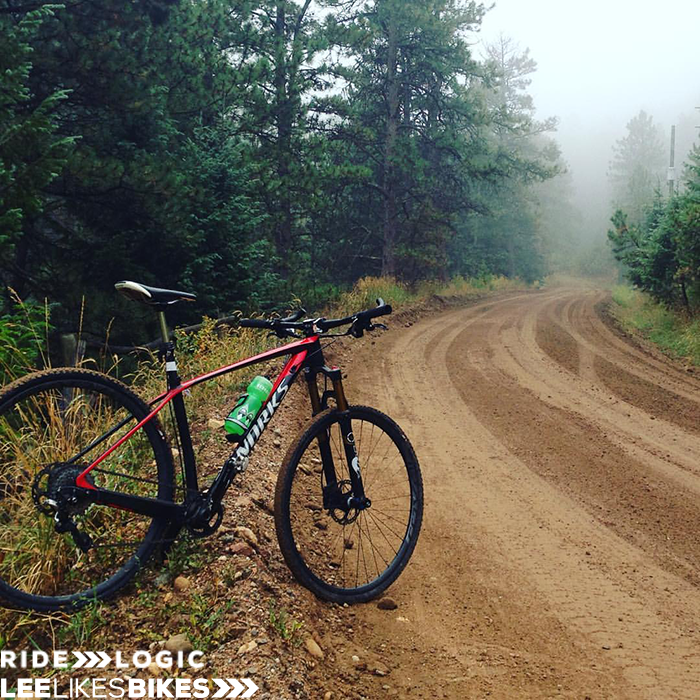Activating your core while climbing a mountain

I’ve heard it said that cycling requires core strength, but it doesn’t develop core strength.
Based on the dead cores I see on many clients, as well as my own issues with a soft underbelly, that seems awfully true.
What if you can ride in a way that both uses and strengthens your core?
First, what is a “core?”
For our purposes, your core is your hips, shoulders and everything in between. Pretty much everything but your arms, legs, neck and head.
Most of my current riding and teaching focuses on core engagement and shifting most of the work to the big muscles in the middle of your body.
Shouldn’t we be doing off-bike core work?
Heck yes! If you’re smart, you’ll do something every day. A few years ago my lower back went haywire. The issue was caused by thinned discs (getting older) and supporting muscles that simply stopped working. The result was a nerve getting pinched between two vertebra — painful!
The solution has been daily core activation work. Some days it’s a little easy something. Other days it’s big time strength work. I don’t ride or teach until I feel the important parts working.
I’m also a huge believer in efficiency. Lunges while doing shoulder PT. Hamstring stretches while flossing my teeth. Riding my bike to meetings. That sort of thing.

Riding to meetings is awesome efficiency. Today I got some rain gear from my friends at Qloom. For a nice discount, enter the coupon code “leelikesbikes.”
A new trick
Today I discovered a new combo: Pedaling up a mountain while dong core work. This served as an awesome warmup, and it prepped me for some hard climbing followed by weights in the driveway.
In each exercise, create moderate tension between your hand(s) and your hips. Pack your shoulders. Hold each exercise for 20 pedal strokes then move on. When you’re done, do the series again. When you’re good and ready, ATTACK!
Give this a try on your next unhurried, seated climb.
Bike cow
Both hands on the bar.
Push the bar forward while you push the saddle backward.
Try to arch your whole back — neck to tailbone — without actually arching it.
Feel tension in the fronts of your shoulders and along your spine to your tailbone.
This should feel like cow pose in yoga, but you should keep your torso straight. Feel the tension without breaking form.
Bike cat
Both hands of the bar.
Pull the bar toward you while you pull the saddle forward.
Try to curl your whole torso — shoulders to pubic bone — without actually curling it.
Feel tension in your abs — especially in the bottom of your belly — and in your lats. Feel how that opposition seems to create more pedaling power.
This should feel like cat post in yoga, but you should keep your torso straight. Feel the tension without breaking form.
Left slap
Left hand on the bar. Right hand picking your nose or whatever.
Push the left grip (or hood) to the left.
Keep your torso straight and pointing forward.
Shoulder tries to rotate you one way. Belly resists the rotation.
Feel tension in the back and side of your shoulder, and notice the tone though your abdomen.
After 20 or so pedal strokes, push the left grip to the right.
Feel tension in your chest. Keep your shoulder packed. Notice a different tone through your abdomen.
Keep your torso straight and pedal perfectly. Oh, and try to ride in a straight line!
Right slap
The same as left slap, but with the other arm.
Push the right grip to the right, then to the left.
As you get the hang of it, increase the tension. Ride straight!
Today I really enjoyed doing this. As I climbed and did on-bike isometric yoga, my whole body warmed up nicely, and my power got better and better.
What kind of engagement is best for climbing?
Every type of engagement is better than no engagement! The difference between a resting/lazy core and an engaged core is huge. You should feel that too.
When it comes to making big wattage, I think bike cat is the secret weapon.
Try this out. Please tell us how it goes.
Lee
Know more. Have more fun!
Join the leelikesbikes mailing list:

Leave a Reply
Want to join the discussion?Feel free to contribute!